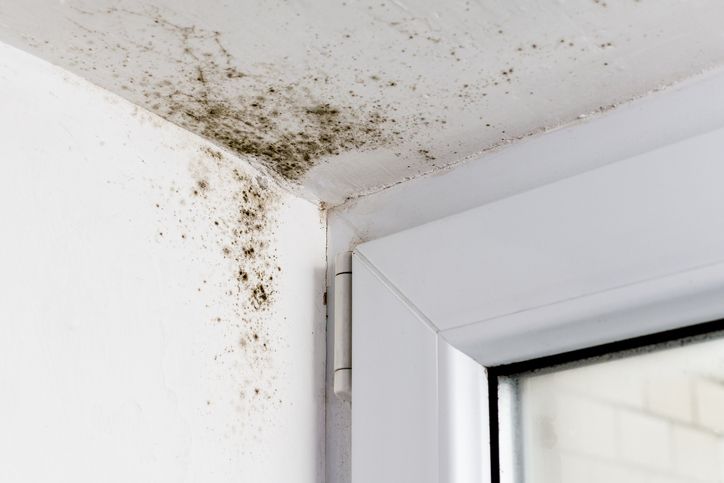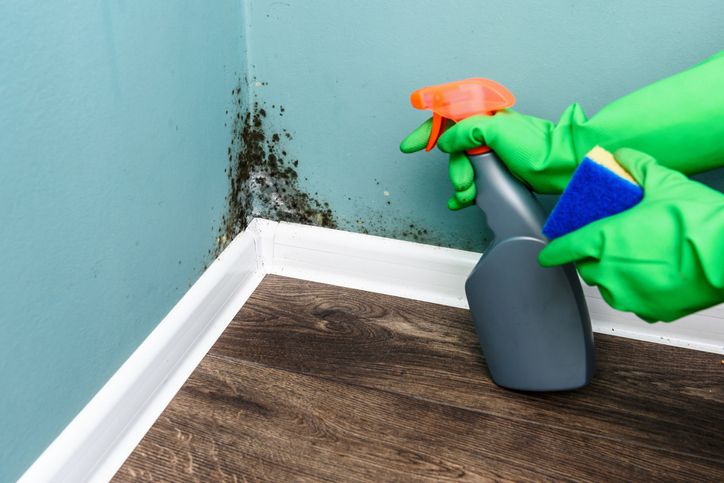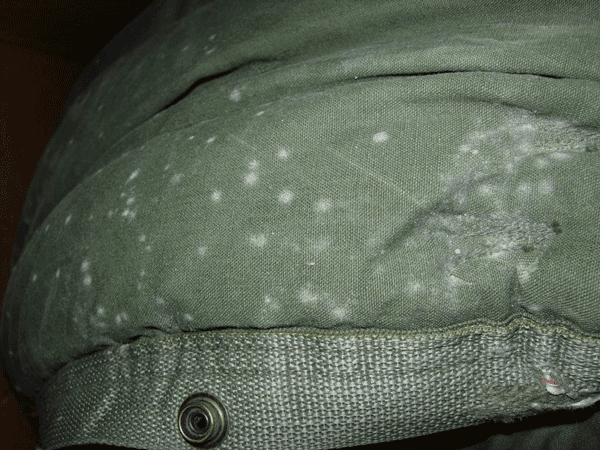Mould
What are moulds and where do they come from?
Moulds are microscopic members of the fungus family, found everywhere in our environment. Mould plays an important role in our outdoor environment, helping to decompose organic matter such as leaves and wood. As mould grows it produces:
Mycelium
Spores
What does mould need to grow?
Water and food are the two essential conditions for mould to grow. Mould can become established in as little as 48 hours!
Certain types of mould require an extremely wet environment, while others require far less moisture to grow. Moisture resulting from any of the following problems can invite mould into your home:
- Water leaking in from outside (from roof, walls or floor)
- Plumbing leaks
- Normal activities that use water such as bathing, washing clothes or cooking
- Condensation on or within walls or floors

Are moulds a health hazard?
Most types of moulds found in homes and buildings are not a health concern for healthy people. While some health problems are a result of exposure to mould, others are more difficult to prove. Health effects depend on the:
- Type of mould
- Amount of mould
- Production of certain substances by the mould
- Degree of exposure
- Health condition of the person exposed
Pregnant women, infants, the elderly, and those with weakened immune systems are more at risk of health problems when exposed to mould.
What are the health effects of mould exposure?
Allergies to mould may develop in up to 5% of the population.
Once removed from the environment, allergies and irritation should disappear. Consult with your family doctor if you think you suffer from health effects due to mould exposure.
For sensitive individuals, allergic symptoms can include:
Other health effects of mould:
How do you prevent mould?
While we cannot eliminate mould from our environments completely, there are a number of ways to prevent mould growth in your home.
- Check your home regularly for signs of moisture and mould.
- Fix any water leaks, moisture or condensation problems promptly.
- If water gets into your home, dry the area within 48 hours to prevent growth.
- Ensure sufficient ventilation in moisture heavy rooms such as bathrooms or kitchens. Fans and clothes dryers should exhaust to the outside of the home.
- If necessary, use a dehumidifier to lower the relative humidity (below 60%, ideally 30-50%).
- Reduce the amount of stored materials. Moulds grow on fabrics, paper, wood and anything that collects dust and holds moisture.
Should you get professional help to clean up mould growth?
Whether you should clean the area yourself depends on the size of the mould growth.
Small areas
Large areas
What should you do to protect yourself and others when cleaning mould?
Cleaning and removing mould may increase the amount of spores and other substances in the air, possibly exposing your skin to direct contact with mould. Follow the checklist below to protect yourself when cleaning mould.
- Disposable particulate respirator (3M 8210 or equivalent N95-level respirator)
- Unvented safety goggles
- Household rubber gloves
- Remove infants and other family members suffering from asthma, allergies or other health problems from the work area and adjacent room during cleaning
- Provide isolation measures if sensitive individuals cannot leave the affected or adjacent area. Isolation measures include closing doors and taping the seams or taping plastic sheeting to walls and ceiling
- Use an exhaust fan to blow air out of a window in the room to help prevent contamination of other areas of the house and provide ventilation

Should you test indoor air for mould?
Health Canada does not recommend testing the air for mould in most situations. The goal is to address dampness and clean any visible mould that could contribute to poor indoor air quality and health problems. For more information, please refer to Health Canada’s Guide to addressing moisture and mould indoors (external link).
How do you get rid of mould?
The first step to dealing with mould growth is to find the source of the moisture and remove it. If the mould returns after cleaning, then you can be sure the source of the moisture still exists.
Although it is possible for homeowners to clean small mould growth, remediation procedures can get complicated. Seek the assistance of an experienced contractor if you do not feel comfortable eradicating the mould growth yourself.
Follow the guide below for directions on how to clean mould:


